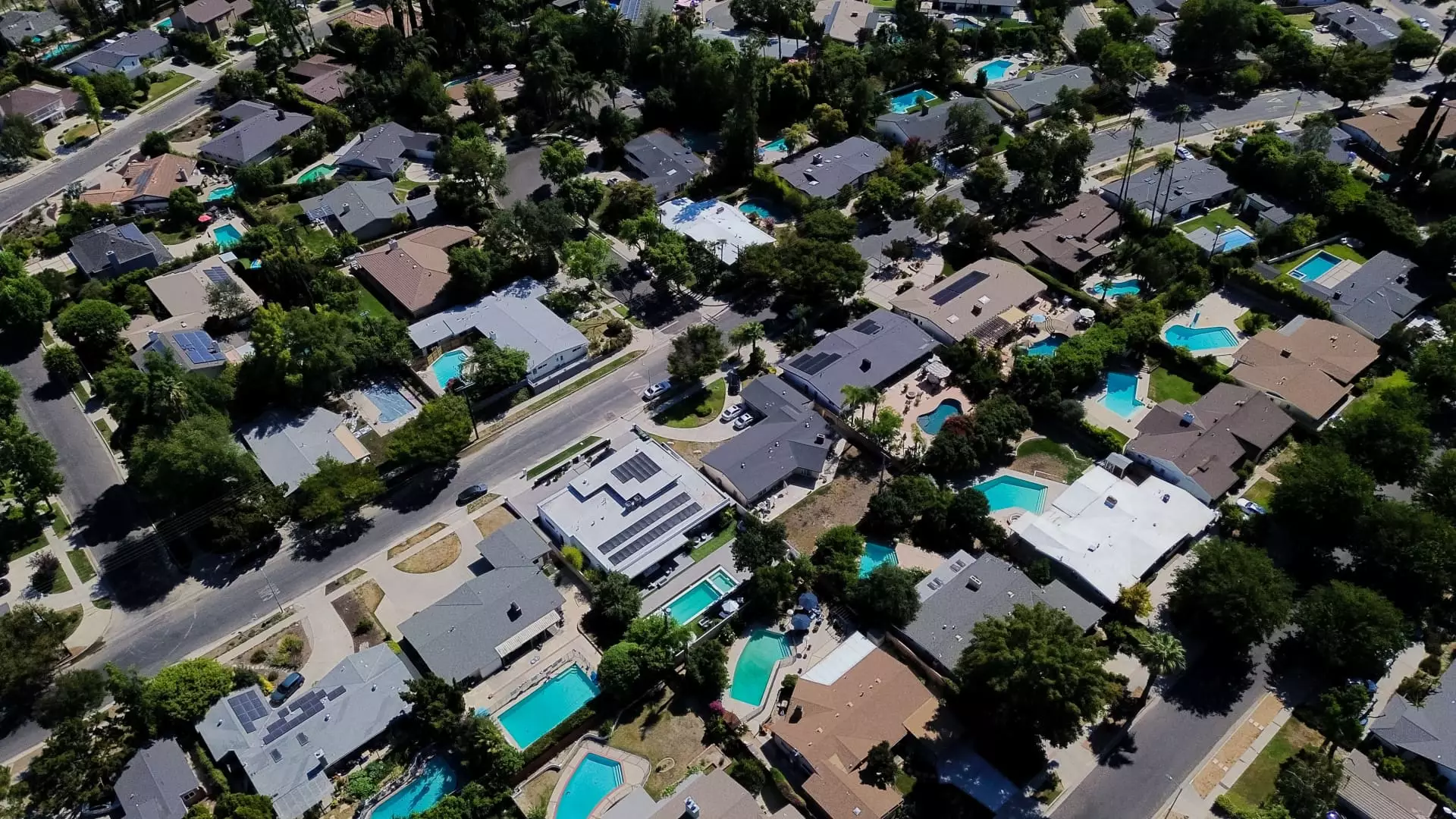Why the Housing Market’s Deterioration Signals a Dangerous Economic Stagnation

The recent drop in existing home sales, a sharp 2.7% decline to 3.93 million units, exposes a fragile housing market teetering on the brink of stagnation. This figure, significantly worse than the modest 0.7% decline predicted by analysts, reveals a stark reality: buying activity is faltering under the weight of persistent economic headwinds. While industry narratives might suggest a resilient market, the truth is far more ominous. The fact that sales remained flat compared to June 2024 underscores a troubling inertia—potentially a sign that the housing bubble is losing its foundational strength.
Much of this sluggishness can be traced directly to mortgage rate dynamics. Despite recent stability—hovering around 6.77%—these rates remain stubbornly high, effectively pricing out a broad swath of prospective homeowners. When the average mortgage rate exceeds 7%, it isn’t just a minor inconvenience; it’s a mortgage killer, suppressing demand and trapping potential homeowners in rental limbo. The anticipated relief—a decline to 6%—is not imminent, making the outlook grim for first-time buyers. These prospects are vital for a healthy market, yet they seem increasingly out of reach. The built-up backlog of unmet demand threatens future stability, rendering the market less of a dynamic system and more of a stalling engine.
Structural Imbalances and Their Long-Term Consequences
The housing sector’s current state is less about organic growth and more a reflection of chronic structural deficiencies. A 15.9% increase in homes for sale signals a creeping oversupply, but it is a slow-motion oversupply rooted in decades of underbuilding. With only a 4.7-month supply—well below the balanced 6-month threshold—the market remains tilted in favor of sellers, yet the pace of transactions indicates a stagnation rather than exuberance. The median home price, rising 2% annually to $435,300, continues its record-breaking streak, but this growth is increasingly disconnected from the average buyer’s capacity.
The scarcity of affordable options—a consequence of sluggish construction and population growth—exerts a price squeeze that disadvantages first-time buyers. Their share of sales has dropped from 40% to 30%, a troubling decline that foreshadows a widening generational divide. Meanwhile, high-end sales are booming, with homes over $1 million shooting up by 14%, exposing a clear polarization: the affluent are still transacting at higher rates, while the middle and lower segments languish. This divergence threatens to fragment the housing market further, fostering an environment where only the wealthy can participate meaningfully, and middle-class stability erodes.
The Economic Implications of a Stalled Market
Beyond the housing sector, these trends portend broader economic vulnerabilities. The surge in cash deals—now constituting nearly 29% of transactions—inflates concerns about speculative behavior and anti-market sentiments. Several deals are being done outside the traditional financing channels, signaling possible undercurrents of opacity and risk. Additionally, properties are spending longer on the market, averaging 27 days, and receiving fewer offers, signaling diminished buyer enthusiasm and diminished market liquidity.
The implications of these persistent issues extend far beyond the real estate window. Housing is a cornerstone of personal wealth—growing by an average of nearly $141,000 over five years for homeowners—yet access to this wealth generation avenue is shrinking. The stifling mortgage environment combined with limited construction growth hampers wealth accumulation for middle and lower-income families, with discouraging long-term impacts on economic mobility.
In sum, what we are witnessing is an economy increasingly hampered by rigid housing conditions, rising prices that exclude many, and an overall demand that is shrinking beneath the weight of structural inefficiencies. This isn’t merely a cyclical downturn; it reflects a systemic drift towards economic stagnation, where the promise of homeownership—once a cornerstone of prosperity—is slipping away for millions.





